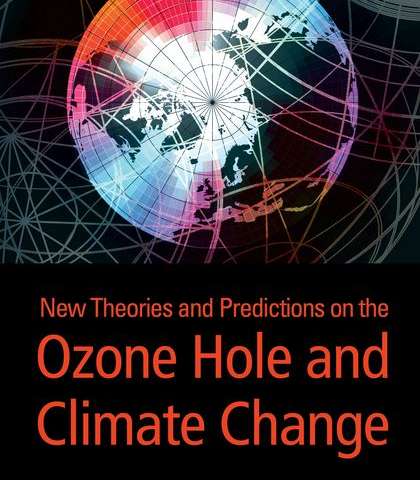CFC most likely major driver of climate change, not CO2: Expert

The view that human activities are likely responsible for most of the observed increase in global mean temperature ("global warming") since the mid-20th century is probably a correct reflection of current scientific thought. However, chlorofluorocarbons (CFCs), not carbon dioxide (CO2), are most likely to be the major driver of climate change, according to a forthcoming book authored by Professor Qing-Bin LU, a physicist in the University of Waterloo, Canada.
About sixteen years ago, Qing-Bin Lu and colleagues proposed that electrons arising from cosmic rays play an initiating/key role in ozone-depleting reactions and developed a prediction model for the ozone hole based on effective dissociative electron transfer reactions of CFCs and other halogen-containing molecules absorbed on ice surfaces. On the basis of his observations, Professor Lu further proposed that, currently, CFCs are the main drivers for global climate change.
In his forthcoming book, "New Theories and Predictions on the Ozone Hole and Climate Change", Professor Lu quantifies the contributions of the cosmic-ray-driven electron-induced-reaction (CRE) mechanism to the ozone hole and of the CFC-warming mechanism to global surface temperature change. In contrast to conventional theories that require sophisticated computer simulations and multiple parameters, these theories are of exceptional parsimony, predictability, and explanatory power, including zero or only one parameter.
The CRE theory made a unique prediction that there exists 11-year cyclic variations in polar ozone loss and the associated stratospheric cooling, both of which have now been well proven by the data collected over Antarctica in the past decades. Remarkably, a near perfect linear correlation with a coefficient of up to 0.98 between CFCs and global surface temperature has also been observed.
*For more information, refers to Figures 9.1 and 9.2 in New Theories and Predictions of Ozone Hole and Climate Change, 254-255.
Despite using zero or few parameters, the author's conceptual physical models have shown excellent agreements with observed ozone and global surface temperature data with impressive accuracy (~90%). For instance, with respect to the mean temperature in 1950-1975, the predicted temperature was 0.620 ?C for the year 2014 in Professor Lu's theoretical calculation, while the actual observed temperature was 0.623 ?C for 2014, according to the UK Met office HadCRUT4 dataset released in early 2015.
The main conclusion of this book, supported by substantial and robust observations, is that CFCs are the major culprits behind not only the destruction of the ozone layer but also global climate change since the mid-20th century. The successful execution of the Montreal Protocol and its revisions has shown its effectiveness in controlling the ozone hole in the polar regions and reversing the global warming trend. However, it is important to continuously phase out the global use of all halogen-containing warming gases, including CFCs, HCFCs, HFCs, etc. This provides a strong rational for the international agreements reached recently by the US, China and European Union to further control the production and use of HFCs and other halogenated gases.
This book is self-contained and unified in presentation, hence making it suitable for non-expert readers and policy makers who wish to have an overview of the science behind atmospheric ozone depletion and global climate change. Graduates students and ambitious undergraduates who are interested in the field of physics, chemistry, environmental and climate sciences might also find this book as a useful reference to their understanding of ozone depletion and climate change.
More information:
Further information about the book and sample chapters can be found at: www.worldscientific.com/worldscibooks/10.1142/9286 . The book is available at all respected academic bookstores, at US$ 98.00 / £ 65.00 (hardcover).
Provided by World Scientific Publishing